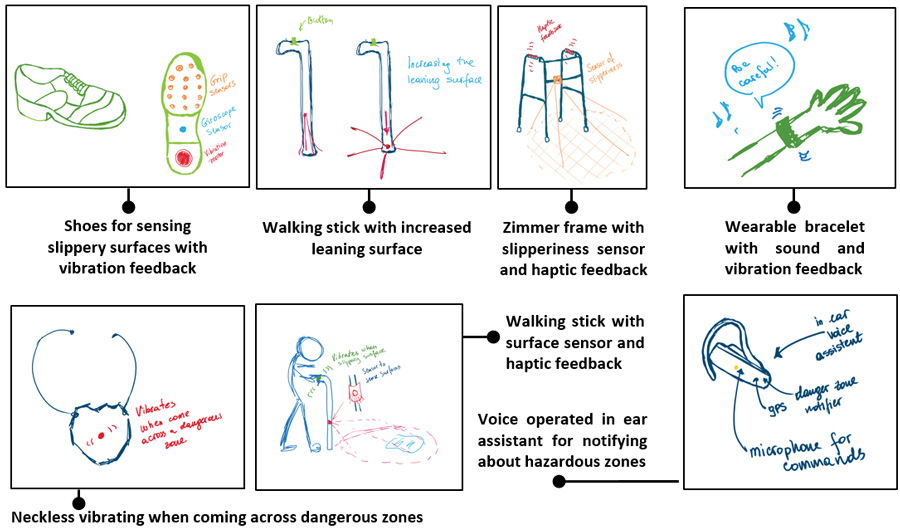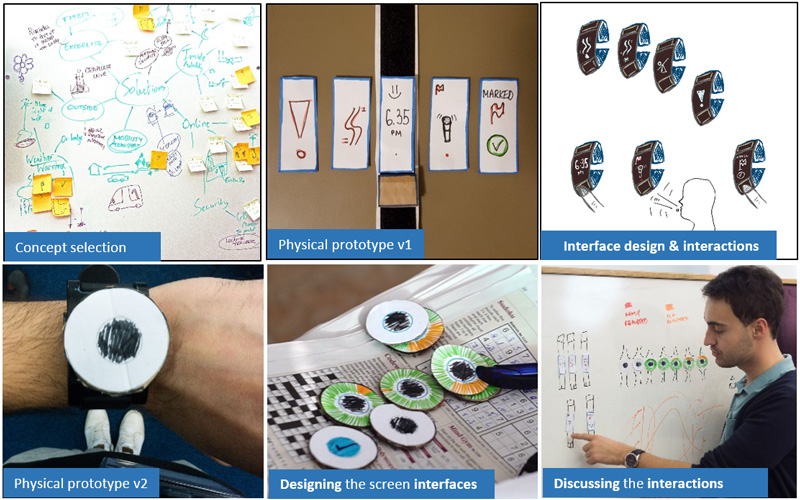Pave
UX | Design Research | Innovation
Problem space research

This project was aimed at improving the life of elderly people in England with the help of assistive technology.
At first we started by performing a literature review and brainstorming on current known issues that elderly people experience. The gathered findings were then put on a mind map that helped to identify the key areas that we could focus further.
These were:
- Memory
- Mobility
- Hearing
- General health
- Eye sight
Additional information has been collected by performing preliminary interviews with elderly people and domain experts. An affinity diagram helped in restructuring the data and narrowing down the focus. Mobility has turned out as having most impactful consequences and was considered as the problem space to focus on.
User research

Interviews took place in Halesworth where a total number of 9 elderly people were invited to participate, both men and women.
Each semi-structured interview took 45 minutes. The questions were aimed at identifying what frequent activities do these people do, hobbies, their exposure to technology, their experience of walking, falls and other difficulties they might be struggling with. Interviewees have also been asked to sign a consent form. Both qualitative and quantitative data has been collected that has further been taken for an analysis.
Data Analysis
Interviews were transcribed, coded and organized for understanding the common issues as well as identifying the most severe pain points.
Building an empathy map helped in visualising people’s experiences and motivations about what they say, do, hear, think and feel. The aggregated data has then been used for building a persona. This technique helped in further stages of design because it represented a large user group and in the same time was virtually a person, thus making it easier to design for.
User requirements and needs
Establishing the pain points for each person made it possible to define the common user needs and requirements. The information has been assembled and sorted in a spreadsheet. As an additional grouping technique for interview data we used a diagram of possible solution spaces on which we plotted quotes from users.
The findings were plotted on a 2X2 matrix based on two sets of criteria: indoor vs outdoor and body vs environment. This allowed us to identify the opportunity space in the quadrant between outdoor and environment, as in this space we couldn’t find almost any technology for elderly people, except those targeted on a specific limiting user group as blind people. This domain has been selected as a focus for further investigation and design considerations.
We identified three main factors (outdoor, environmental) that cause falls. These are: weather, slippery surfaces and trip hazards.
Design
We have applied parallel design technique for developing concept sketches showing different approaches on helping in falls prevention. We came up with a total of 15 different concepts.
After discussing them within the group we did several interviews with the users asking for their feedback about:
- Shape
- Material
- Colors
- Symbols
- Ways of Interaction
The interviewees were additionally shown storyboards that described user journey in the weather notification scenario. This was helpful in explaining the concept.
Lo-fi prototyping
Ideas were plotted on a diagram and compared based on the feedback. Next, we have built two prototypes with different look and feel: a rectangular and a round wrist device.
Testing the concepts with users
The developed designs were evaluated by conducting user tests. We have considered different use cases and simulated scenarios both during the day and at night.
My contribution was in:
- Developing evaluation scenarios
- Personally conducting user tests
- Gathering users feedback
- Video Recording
- Assisting in simulation of scenarios
- Gathering evidence about hazardous places






